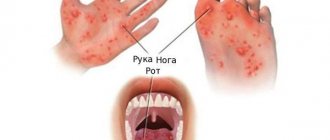Blood-borne infections are infectious microorganisms and viruses in human blood that can cause disease in humans. These pathogens include, but are not limited to, hepatitis B, hepatitis C, and human immunodeficiency virus (HIV). These pathogens can be transmitted through blood and other body fluids.
Contaminated needle sticks and other sharps-related injuries can expose workers to bloodborne pathogens. Workers in many professions, including health care workers, nurses, and other health care personnel, can all be at risk of contracting bloodborne pathogens.
Most bloodborne pathogens do not cause immediate illness, but they can still be passed on to other people. In addition, some bloodborne pathogens can cause death.
If your employees are at risk of contact with pathogens in a medical organization, you need our services. Find out more about occupational safety and health in medicine.
Major viral infections
A viral infection is a disease that occurs when pathogenic viral particles enter the body. Viruses hijack normal living cells in the body. They use these cells to replicate and multiply, ultimately destroying the host cell - this is what causes the symptoms of a viral infection. It is important to understand the differences between viral and bacterial infections. Unlike bacterial infections, which can be treated with antibiotics, viral infections are not as easy to treat. Many, such as ARVI, run their course and the body recovers on its own, while others, such as HIV, do not.
Viral diseases are extremely common infections. There are many types of pathogens that cause a wide variety of viral diseases. The most common type of viral illness is the common cold, caused by a viral infection of the upper respiratory tract (nose and throat). Other common viral diseases:
- chicken pox;
- flu;
- herpes;
- human immunodeficiency virus (HIV/AIDS);
- human papillomavirus (HPV);
- Infectious mononucleosis;
- mumps, measles and rubella;
- shingles;
- viral gastroenteritis (stomach flu);
- viral hepatitis;
- viral meningitis;
- viral pneumonia.
Viral infections are highly contagious and are transmitted from person to person when the virus enters the body and begins to multiply. The source is a sick person (animal) or carriers. Common routes and mechanisms of human-to-human transmission of viruses include:
- inhalation of airborne droplets contaminated with the virus;
- eating or drinking water contaminated with the virus;
- sexual contact with a person infected with a sexually transmitted virus;
- indirect person-to-person transmission by a viral host such as a mosquito, tick, or field mouse;
- touching surfaces or body fluids contaminated with the virus.
Viral diseases vary in their development and course and cause a wide range of symptoms that vary in nature and severity depending on the specific cause of the viral infection and other factors, including the person's age and general health.
Viral diseases cannot be treated with antibiotics, which can only cure bacterial diseases and infections. However, the most common forms of viral infection - ARVI and influenza - go away on their own in relatively healthy people. Source: Influenza and acute respiratory viral infections. Selkov S.A. Infection and immunity, 2021. p. 216. This means that common species cause illness for a certain period of time, then the effects of the viral infection subside, all symptoms disappear as the immune system attacks the virus and the body recovers.
Fecal-oral transfer
A common method of transmission of infection. In essence, this is a pathogen transmission mechanism when a pathogenic microorganism is localized in the gastrointestinal tract. It can come to the surface either with feces or with vomit. At the same time, it lasts for a long time. Infection occurs mainly through dirty hands (this means even invisible skin contamination, for example after playing in the ground or with animals) or contaminated water or food.
You can become infected in this way through contact with objects touched by the patient - linen, food, dishes, etc., as well as through unprocessed foods - unboiled milk, raw meat, unwashed vegetables, etc.
Article on the topic
Wait for the second wave and keep your head down. When will there be a cure for COVID-19?
Viral infection: main symptoms of the disease
Symptoms of viral diseases vary depending on the specific type, the characteristics of the virus causing the infection, the area of the body affected, the age, medical history of the patient and other factors, the initial condition of the viral infection. Symptoms of viral diseases can affect almost any area of the body or body system. These may include:
- flu-like symptoms (fatigue, fever, sore throat, headache, cough, aches and pains);
- gastrointestinal disorders such as diarrhea, nausea and vomiting;
- irritability;
- malaise;
- rash;
- sneezing;
- nasal congestion, runny nose, or postnasal drip;
- swollen lymph nodes;
- inflammation, swelling of the tonsils;
- unexplained weight loss.
In infants, the pattern of viral infection may also include:
- protrusion of the fontanel on the top of the head;
- feeding difficulties;
- constant crying or restlessness;
- excessive sleepiness.
Serious signs that may indicate life-threatening complications
In some cases, it is necessary to strictly control how the infection manifests itself. Seek medical attention immediately if you experience any of the following symptoms:
- change in orientation in time, space or level of consciousness;
- chest pain;
- deep, wet chest cough producing yellow, green, or brownish sputum;
- high temperature (above 39 degrees);
- lethargy or lethargy;
- convulsions;
- shortness of breath, wheezing, or difficulty breathing;
- stiff neck muscles;
- yellowing of the skin and whites of the eyes (jaundice).
Diagnostic methods
Most acute respiratory viral infections and influenza during the epidemic season are diagnosed clinically, taking into account the characteristics of the symptoms, the severity of the disease and the timing of the development of the disease (incubation period). Depending on how long the incubation period lasts - from the moment of contact with the patient to the first signs of the disease, the type of ARVI can be clarified.
In some cases, certain tests can help - blood tests, PCR tests, antibody studies. Viral infections have specific laboratory diagnostic features; they are characterized by changes in blood parameters. Additionally, the doctor can decide how to identify and distinguish specific types of viruses. For example, when infected with COVID-19, it is necessary to perform a rapid test for the presence of the virus, and during the recovery stage, it is necessary to determine the level of antibodies. Source: Improving the diagnosis of herpes viral infections. Vasiliev A.N., Fedorova N.E., Klimova R.R., Adieva A.A. Clinical laboratory diagnostics, 2012. p. 52-55.
How can I prevent contracting blood-borne diseases?
There are many more people working in a medical facility than the maintenance staff. Facility staff may include nurses, unit coordinators, quality assurance staff, administrative specialists, nursing staff, and many others. Although many employees may not have direct contact with patients, the possibility of exposure to pathogens is always present.
To reduce or eliminate the risk of occupational exposure to bloodborne pathogens, the employer must implement a workplace exposure control plan detailing measures to protect workers.
The plan must also outline how the employer will use technology, controls, personal protective clothing and equipment, worker training, medical surveillance, and vaccinations. Engineering controls are the primary means of eliminating or minimizing employee exposure and include the use of safer medical devices such as needleless devices and plastic capillary tubing.
Treatment of viral infection in adults
Treatment for viral infections depends on the specific virus and other factors. General treatment measures are aimed at relieving symptoms so that a person can rest, maintain their strength, and recover without developing complications. The doctor determines how to treat infections.
Common medications and non-drug treatments for viral infections include:
- antipyretic, non-steroidal anti-inflammatory drugs for fever, body aches and pain;
- taking extra warm liquid;
- additional rest and sleep;
- proper nutrition.
It is important to know that antibiotics are not indicated for viral infections; they are applicable only when microbial complications develop or threaten to develop.
Depending on the type of viral infection and the presence of complications, a wide range of other treatments may be needed. For example, a human papillomavirus (HPV) infection that leads to cervical dysplasia can be treated by surgically removing abnormal cells on a woman's cervix.
In some cases, certain medications may be prescribed to treat viral diseases:
- antiretroviral drugs, which prevent HIV from reproducing, which slows the spread of HIV in the body;
- antiviral drugs that minimize the severity and duration of some viral infections such as influenza and shingles, especially in people at high risk for serious complications. For example, the drugs Oseltamivir and Zanamivir may be prescribed for some cases of influenza. These medications are not suitable for everyone who has the flu.
1.What is sepsis?
Sepsis
is a serious disease caused by a suppressed immune response to infection. The more commonly known common name for sepsis is blood poisoning. To fight infection, the body produces chemicals that can cause severe inflammation throughout the body. This inflammation can in turn lead to organ damage.
Blood clotting in sepsis reduces blood flow to the limbs and internal organs, depriving them of nutrients and oxygen. In particularly severe cases, the infection leads to a life-threatening drop in blood pressure. This condition is called septic shock
, and it is really very serious. Septic shock can quickly lead to multiple organ failure—the lungs, kidneys, and liver—causing death.
A must read! Help with treatment and hospitalization!
Possible complications after viral infections
In some cases, the illnesses can lead to serious, possibly life-threatening complications from a viral infection, such as dehydration, bacterial pneumonia, and other secondary bacterial infections. This is especially likely in people at risk of complications. These include those with chronic illness, suppressed or weakened immune systems, infants and the elderlySource: ACUTE RESPIRATORY VIRAL INFECTIONS AND THE HEART. Kirichenko A.A. Consilium Medicum, 2021. p. 22-27. In addition, some types of sexually transmitted viral infections, such as HIV/AIDS and HPV, are themselves dangerous and can lead to serious complications and death.
Types of bacterial skin infections
| View | Skin infection and its features |
| Staphylococcal infections | Superficial folliculitis - characterized by inflammatory processes on the skin with a white purulent center. Most often, the infection affects the hair areas on the arms, legs and thighs, usually after hair removal carried out without observing hygiene standards. May become chronic. |
| Boils are a type of deep folliculitis, characterized by an acute purulent-necrotic inflammatory process of the follicles, sebaceous glands, and connective tissue around them. Most often, the infection is found in the cervical, occipital, femoral areas, on the back and even on the face. In the latter case, it can cause serious complications such as sepsis or meningitis. | |
| Anthrax is another type of deep folliculitis. It is a particularly dangerous infection, characterized by very rapid development and acute course. It is manifested by intoxication, inflammatory processes of the skin, lymph nodes, and internal organs. | |
| Panaritium is an infection characterized by an acute purulent process that affects the fingers of the upper and, less commonly, lower extremities. It manifests itself as pain, swelling, redness, and fever. In later stages of development, surgical intervention is required. | |
| Streptococcal infections | Erysipelas is an infection caused by group A streptococcus. It is characterized by the development of inflammatory processes of a serous or serous-hemorrhagic nature, manifesting themselves as focal lesions of bright red skin with swelling, general intoxication of the body and an increase in temperature. It is one of the most common bacterial infections. |
| Streptoderma is an infection characterized by the development of serous inflammatory processes without suppuration, severe swelling of the affected area, and the rapid formation of blisters or spots prone to peeling. | |
| Abscess - characterized by the formation of a cavity in the subcutaneous fatty tissue or muscles filled with pus. The infection manifests itself with swelling, hyperemia, and pain symptoms. |
Prevention and protection measures
Viruses spread in different ways, depending on their classification and characteristics. Hepatitis C, a liver disease, is transmitted through body fluids. On the other hand, the flu can be spread by contact with the virus left on an object, such as a phone, or through droplets in the air if someone with the flu sneezes or coughs in front of you. Not all viral infections can be prevented, but you can reduce your risk of contracting the virus in several ways:
- regularly vaccinate against viral infections;
- wash your hands frequently;
- avoid contact with sick people;
- Do not give personal items to anyone (toothbrushes, razors, manicure accessories).
Article sources:
- Laboratory diagnosis of congenital viral infections. Nisevich L.L., Bakhmut E.V., Ashirova A.A., Medzhidova A.A., Kushch A.A., Konopleva T.N., Talalaev A.G., Kask L.N., Parsegova T. S.S., Tumanova E.L. Children's infections, 2006. p. 12-18
- A new look at latent viral infection. Filatov F.P., Shargunov A.V., Blinov V.M. Hematology and Transfusiology, 2014. p. 28
- Improving the diagnosis of herpes viral infections. Vasiliev A.N., Fedorova N.E., Klimova R.R., Adieva A.A. Clinical laboratory diagnostics, 2012. p. 52-55
- Features of immunosuppression in viral infections. Churina E.G., Urazova O.I., Novitsky V.V., Naslednikova I.O., Voronkova O.V., Slepicheva N.R. Bulletin of Siberian Medicine, 2009. p. 112-118
- Influenza and acute respiratory viral infections. Selkov S.A. Infection and immunity, 2021. p. 216
- ACUTE RESPIRATORY VIRAL INFECTIONS AND THE HEART. Kirichenko A.A. Consilium Medicum, 2021. p. 22-27
Home / Publisher / Routes of infection spread
8.3. WAYS OF INFECTION SPREAD
Foreign and domestic literature describes five main ways of penetration of infectious agents into the fetus (Aankirskaya A.S., 1985; Radzinsky V.E., 1992; Kira E.F., 1996; Levitskaya S.K., 1991):
1) ascending (through the cervix and membranes of the ovum);
2) transplacental, or hematogenous (through the placental barrier to the fetus);
3) descending (from inflammatory changes in the uterine appendages, appendix);
4) intrapartum (when the fetus passes through the infected birth canal of the mother);
5) mixed.
Antenatally, the infectious agent reaches the fetus hematogenously (transplacentally) or through infected amniotic fluid. More often, during antenatal infection, pathogens enter the fetal body hematogenously. Initially, they enter the placenta with the mother’s blood, where the pathogen can multiply and the subsequent development of the inflammatory process (placentitis). Having overcome the uteroplacental barrier, the pathogen penetrates the fetus and can lead to the development of a generalized infection with damage to the liver, lungs, kidneys, brain and other organs (Ankirskaya A.S., 1989; Ailamazyan E.K., 1995; Esaulova N.E., 1996; Sidelnikova V.M., 1996; Sidorova I.S., 1999; Mikhailov A.V., Lavrova D.B., Kolyachenko E.S., 2003). It should be noted that the spread of pathogens can also occur through the Wharton jelly of the umbilical cord, which is facilitated by the extravascular flow of fluid from the placenta to the fetus (Mindel A., 1995).
Amniotic fluid can be infected by the ascending (from the vagina) and descending (from the fallopian tubes) route, as well as by the fetus itself, which is hematogenously infected and excretes the pathogen in feces and urine, followed by infection of the amniotic fluid. With amnion infection syndrome, premature rupture of the membranes may occur with the subsequent development of endometritis and infectious complications of the newborn (Ankirskaya A.S., 1985). Considering the leading role of transplacental (hematogenous) infection in antenatal IUI, it is important to note that the state of the barrier function of the placenta largely determines the possibility of developing an infection and the amount of infectious agent reaching the fetus. It is known that fetoplacental insufficiency sharply increases the risk of developing generalized IUI in the presence of a chronic lesion or acute disease in a pregnant woman.
The hematogenous route of transmission of infection is characteristic of cytomegalovirus, enterovirus infection, herpes simplex virus, chickenpox, and is also observed with listeriosis, mycoplasmosis, some bacterial infections and leads to severe disseminated lesions of the fetoplacental system, vital organs of the fetus (brain). , liver, lungs) (Davis P. A., 1987; Lozovskaya L. S., 1995; Samokhin P. A., 1987; Si-makova M. G., 1995).
The ascending route of infection is characteristic of conditionally pathogenic microflora, fungal infections, and is also observed with chlamydia, mycoplasmosis, listeriosis, and other infections. With the ascending route of infection, microorganisms penetrate through the membranes into the amniotic fluid, where the pathogen multiplies. In this case, the fetus finds itself in an infected environment. Infection of the internal cavities of the fetus occurs through ingestion and aspiration of infected waters (Gurtovoy B.L., Ankirskaya A.S., 1994; Tsinzerling A.V., 1986).
The descending route of infection is less typical for IUI, although its risk is high when pathogens persist in the endometrium and fallopian tubes (chlamydia, mycoplasma, ureaplasma) (Radzinsky V. E., 1996; Tareeva T. G., 1994).
The intrapartum route of infection (infection of the fetus during childbirth by aspiration or ingestion of the contents of the maternal birth canal) is most typical for bacterial infection (group B streptococcus, E.coli, staphylococcus, Proteus, Klebsiella, anaerobic flora), but is also possible for viral infection (HSV, CMV) infections, fungi of the genus Candida. Moreover, transmission of infection is possible both in the presence of symptoms of lesions in the area of the cervix and vulva, and in case of asymptomatic isolation of the pathogen (Adaskevich V.P., 1996; Barashnev Yu.I., 1994; Kudashev N.I., 1991; Carmack MA, 1993).
Thus, if a pregnant woman has a urogenital infection, intrauterine infection of the fetus and newborn can occur in any of the above ways.
previous section | content| next section









